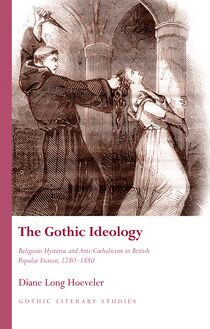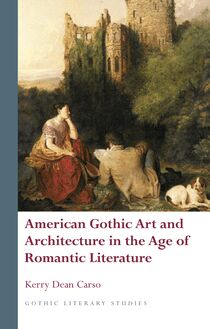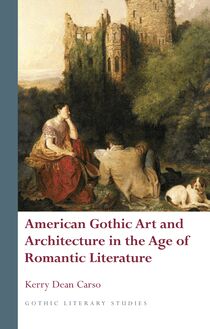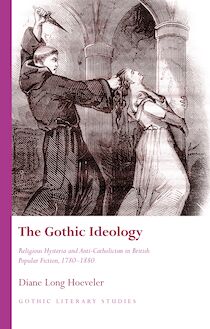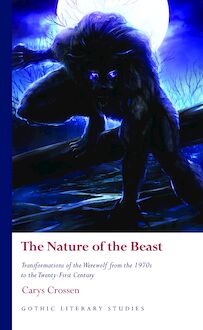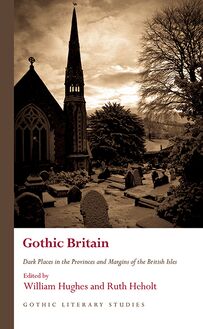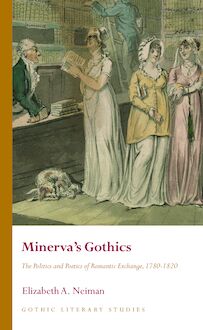-
 Univers
Univers
-
 Ebooks
Ebooks
-
 Livres audio
Livres audio
-
 Presse
Presse
-
 Podcasts
Podcasts
-
 BD
BD
-
 Documents
Documents
-
- Cours
- Révisions
- Ressources pédagogiques
- Sciences de l’éducation
- Manuels scolaires
- Langues
- Travaux de classe
- Annales de BEP
- Etudes supérieures
- Maternelle et primaire
- Fiches de lecture
- Orientation scolaire
- Méthodologie
- Corrigés de devoir
- Annales d’examens et concours
- Annales du bac
- Annales du brevet
- Rapports de stage
La lecture à portée de main
Découvre YouScribe en t'inscrivant gratuitement
Je m'inscrisDécouvre YouScribe en t'inscrivant gratuitement
Je m'inscrisEn savoir plus
En savoir plus

Description
Sujets
Informations
| Publié par | University of Wales Press |
| Date de parution | 15 août 2011 |
| Nombre de lectures | 0 |
| EAN13 | 9780708324080 |
| Langue | English |
| Poids de l'ouvrage | 2 Mo |
Informations légales : prix de location à la page 0,2174€. Cette information est donnée uniquement à titre indicatif conformément à la législation en vigueur.
Extrait
Gothic Literary Studies
Gothic Machine
Textualities, Pre-cinematic Media and Film
in Popular Visual Culture, 1670–1910
David J. Jones
University of Wales PressGOTHIC MACHINE
00 Prelims Gothic Machine 16_6_2011.indd 1 6/16/2011 2:50:58 PMSERIES PREFACE
Gothic Literary Studies is dedicated to publishing groundbreaking
scholarship on Gothic in literature and flm.The Gothic,which has
been subjected to a variety of critical and theoretical approaches,
is a form which plays an important role in our understanding of
literary, intellectual and cultural histories. The series seeks to
promote challenging and innovative approaches to Gothic which
question any aspect of the Gothic tradition or perceived critical
orthodoxy. Volumes in the series explore how issues such as gender,
religion, nation and sexuality have shaped our view of the Gothic
tradition . Both academically rigorous and informed by the latest
developments in critical theory, the series provides an important
focus for scholastic developments in Gothic studies, literary studies,
cultural studies and critical theory.The series will be of interest to
students of all levels and to scholars and teachers of the Gothic and
literary and cultural histories.
SERIES EDITORS
Andrew Smith, University of Glamorgan
Benjamin F. Fisher, University of Mississippi
EDITORIAL BOARD
Kent Ljungquist, Worcester Polytechnic Institute Massachusetts
Richard Fusco, St Joseph’s University, Philadelphia
David Punter, University of Bristol
Chris Baldick, University of London
Angela Wright, University of Sheffeld
Jerrold E. Hogle, University of Arizona
00 Prelims Gothic Machine 16_6_2011.indd 2 6/16/2011 2:50:58 PMGothic Machine
Textualities, Pre-Cinematic Media
and Film in Popular Visual Culture
1670–1910
David J. Jones
UNIVERSITY OF WALES PRESS
CARDIFF
2011
00 Prelims Gothic Machine 16_6_2011.indd 3 6/16/2011 2:50:59 PM© David J. Jones, 2011
All rights reserved. No part of this book may be reproduced in any material
form (including photocopying or storing it in any medium by electronic
means and whether or not transiently or incidentally to some other use of
this publication) without the written permission of the copyright owner.
Applications for the copyright owner’s written permission to reproduce
any part of this publication should be addressed to the University of Wales
Press, 10 Columbus Walk, Brigantine Place, Cardiff CF10 4UP.
www.uwp.co.uk
British Library CIP Data
A catalogue record for this book is available from the British Library.
ISBN 978-0-7083-2407-3
e-ISBN 978-0-7083-2408-0
The right of David J. Jones to be identifed as author of this work has been
asserted in accordance with sections 77 and 79 of the Copyright, Designs
and Patents Act 1988.
Typeset in Wales by Eira Fenn Gaunt, Cardiff
Printed by CPI Antony Rowe, Chippenham, Wiltshire
00 Prelims Gothic Machine 16_6_2011.indd 4 6/16/2011 2:50:59 PMContEntS
Acknowledgements vii
List of illustrationsix
Introduction1
1 Memento Mori, Griendel and the Forerunners, Schröpfer
and Schiller: German Popular Visual Culture 1670–1800.
Friedrich Schiller’s Der Geisterseher/The Ghost-Seer,
Sturm und Drang and Magic-Lantern Shows 18
2 Matthew Lewis’s The Monk, the Marquis de Sade and
Inter-Medial Infuence: The Publishers, Readership,
Visual Spectacle and the Staging of Gothic 1790–1830 39
3 Etienne-Gaspard Robertson’s Gothic Fantasmagorie and
E. T. A. Hoffmann 57
4 Gothic Renewal and Bifurcation: Sheridan Le Fanu,
Edward Bulwer-Lytton’s The Strange T ale, Charles
Dickens, Pepper’s Ghost and Etienne-Jules Marey.
The Daguerreotype and Diablerie in French Visual Media 79
5 ‘In or around the Winter, 1895’: From the Prelude to
Cinema Proper. French Gothic Symbolism, Villiers
de L’Isle-Adam, J.-K. Huysmans, the féeries of Georges
Méliès and Alice Guy Blaché’s Esmeralda 125
6 ‘Another Kind of Showman’: Robert Louis Stevenson,
Bram Stoker, Robert Paul, Albert Smith and Film’s First
Frankenstein. Anglo-American Gothic in the Age of the
First Films 1895–1910 154
00 Prelims Gothic Machine 16_6_2011.indd 5 6/16/2011 2:50:59 PM7 Conclusion: French Extremity 192
Notes 197
Bibliography219
Index231
00 Prelims Gothic Machine 16_6_2011.indd 6 6/16/2011 2:50:59 PMACknowlEdgEmEntS
Portions of this study have appeared elsewhere and I am pleased
to be able to include them here. Sections of chapter 3 have appeared
as David Annwn, ‘Returning to fear: new discoveries in Robertson’s
Fantasmagoria’, The New Magic Lantern, 10/4 (autumn 2008). Two
sections of chapter 4 have appeared as ‘Dazzling ghostland: Sheridan
Le Fanu’s Phantasmagoria’, Irish Journal of Gothic and Horror Studies,
6 (July 2009) and ‘“The gnome’s lighted scrolls”: consumerism
and pre-cinematic visual technologies in The Mystery of Dr Jekyll
and Mr Hyde’, Journal of Stevenson Studies, 7 (November 2010). My
thanks to the editors.
My thanks also to Fabienne Poupon, Lester Smith, Howard Wood,
Kristy Davis, Mervyn Heard, Michael Kilgarriff and Helen Smith.
00 Prelims Gothic Machine 16_6_2011.indd 7 6/16/2011 2:50:59 PM00 Prelims Gothic Machine 16_6_2011.indd 8 6/16/2011 2:50:59 PMIlluStRAtIonS
1 Overlay of phantasmagoria on detail of
d’Orbay’s foorplan 62
2 View northwards to the north-eastern corner
of the cloisters: Fantasmagorie 63
3 View looking to eastern wall of cabinet de physique:
Fantasmagorie 64
4 Advertisement for Walker’s Patent toy version of
Pepper’s Ghost Show, Lester Smith collection 114
5 Mina’s focalization, close-up still 1: Dracula’s
Diorama 176
00 Prelims Gothic Machine 16_6_2011.indd 9 6/16/2011 2:50:59 PM00 Prelims Gothic Machine 16_6_2011.indd 10 6/16/2011 2:50:59 PMFor Lesley and my family
00 Prelims Gothic Machine 16_6_2011.indd 11 6/16/2011 2:50:59 PM00 Prelims Gothic Machine 16_6_2011.indd 12 6/16/2011 2:50:59 PMIntroduction
Diorama: A mode of scenic representation in which a picture, some
portions of which are translucent, is viewed through an aperture, the
sides of which are continued towards the picture; the light, which is
thrown upon the picture from the roof, may be diminished or increased
at pleasure, so as to represent the change from sunshine to cloudy
1weather etc.
Valdine Clemens writes that in keeping ‘with the Gothic practice
of retrieving psychically archaic material for the purpose of cultural
commentary, Bram Stoker’s Dracula (1897) draws upon medieval
and folk traditions of vampirism. Dracula’, she continues, referring
2to the character, ‘signifes a violent return of “buried life”’.
When we read the description of the famous count’s arrival on
British shores we also note a feature which, at frst glance, seems to
signify the return of an outmoded way of seeing, a spectacle of
optical illusion:
There was a bright full moon, with heavy black, driving clouds, which
threw the whole scene into a feeting diorama of light and shade as
they sailed across. For a moment or two I could see nothing, as the
shadow of a cloud obscured St Mary’s Church and all around it . . .
Whatever my expectation was, it was not disappointed, for there, on
our favourite seat, the silver light of the moon struck a half-reclining
01 Main Text Gothic Machine 16_6_2011.indd 1 6/16/2011 3:44:26 PMGothic Machine
fgure, snowy white. The coming of the cloud was too quick for me
to see much, for shadow shut down on light almost immediately, but
it seemed to me as though something dark stood behind the seat
3where the white fgure shone, and bent over it.
This is, of course, the frst view the reader is given of Dracula in
England, focalized through the troubled gaze of Mina Murray. The
moon shining on cloud throws the perceived scene ‘into a feeting
diorama’ and not, alternatively, into the likeness of one. Any
metaphoricity of the words here is, at best, glancing.
Since it has been generally concluded that the action of the novel
takes place in the late 1880s, we might pause to ask ourselves why
the scene alongside the church reminds this young trainee
schoolteacher, an enthusiastic follower of the ‘New Woman’ ideal, of a
diorama, a type of entertainment which had enjoyed its heyday more
than forty years previously. Moreover, why should such a dramatic
moment in a novel published in the early years of cinema be
visualized in terms of a pre-cinematic optical entertainment at all?
The question is given added emphasis when we remember that
elsewhere, Bram Stoker had stressed his characters’ reliance upon
up-to-date fn-de-siècle technologies. Maud Ellmann has written of
the author’s fascination with new and cutting-edge machines, which
manifests itself in repeated usage of typewriters in the novel and
also embraces innovations like stenography, telegraphy, phonology
4and the Kodak camera.
There was certainly nothing new in a writer using images of a
diorama to imply, for example, a retrospective comparison of
timeschemes or a glimmering, luminous subject. George Eliot employed
dioramic changes to expose Bulstrode’s egotistical visualization of
himself in Middlemarch (1874). In The Return of the Native (1878),
Thomas Hardy calls the candle-lit images of a card game refected
5in the player’s eyes ‘a complete diorama’.
So Stoker’s was far from an isolated textual citation of this optical
display, yet we might wonder why such references persisted so vividly
into the age of cinema proper. It is when we consider the work of
that purveyor of mid-nineteenth-century Gothic Sheridan Le Fanu’s
oeuvre that we begin to perceive the closest links between a wide
range of pre-cinematic technological media and the Gothic. His
2
01 Main Text Gothic Machine 16_6_2011.indd 2 6/16/2011 3:44:26 PMIntroduction
novels and short stories cite those kindred optical technologies of
the magic lantern, the diorama and the phantasmagoria more than
the work of any other writer in English during the period. As this
study will explore,
-
 Univers
Univers
-
 Ebooks
Ebooks
-
 Livres audio
Livres audio
-
 Presse
Presse
-
 Podcasts
Podcasts
-
 BD
BD
-
 Documents
Documents
-
Jeunesse
-
Littérature
-
Ressources professionnelles
-
Santé et bien-être
-
Savoirs
-
Education
-
Loisirs et hobbies
-
Art, musique et cinéma
-
Actualité et débat de société
-
Jeunesse
-
Littérature
-
Ressources professionnelles
-
Santé et bien-être
-
Savoirs
-
Education
-
Loisirs et hobbies
-
Art, musique et cinéma
-
Actualité et débat de société
-
Actualités
-
Lifestyle
-
Presse jeunesse
-
Presse professionnelle
-
Pratique
-
Presse sportive
-
Presse internationale
-
Culture & Médias
-
Action et Aventures
-
Science-fiction et Fantasy
-
Société
-
Jeunesse
-
Littérature
-
Ressources professionnelles
-
Santé et bien-être
-
Savoirs
-
Education
-
Loisirs et hobbies
-
Art, musique et cinéma
-
Actualité et débat de société
- Cours
- Révisions
- Ressources pédagogiques
- Sciences de l’éducation
- Manuels scolaires
- Langues
- Travaux de classe
- Annales de BEP
- Etudes supérieures
- Maternelle et primaire
- Fiches de lecture
- Orientation scolaire
- Méthodologie
- Corrigés de devoir
- Annales d’examens et concours
- Annales du bac
- Annales du brevet
- Rapports de stage

